本文由 Carlo Ratti Associati 授权mooool发表,欢迎转发,禁止以mooool编辑版本转载。
Thanks Carlo Ratti Associati for authorizing the publication of the project on mooool, Text description provided by Carlo Ratti Associati.
Carlo Ratti Associati:2019年4月,CRA – carlo Ratti Associati与全球能源公司Eni合作,为米兰设计周开发了一种蘑菇建筑结构。该装置安装在米兰市中心,是一系列拱门结构,由全长达1公里的创纪录菌丝体制成,它从土壤中完全生长出来只花了六周的时间,今月底(2019年4月)将以完全循环的方式重新回到土壤中。
Carlo Ratti Associati:CRA-Carlo Ratti Associati, together with global energy company Eni, has developed an architectural structure made of mushrooms, installed in the center of Milan for Design Week 2019. Grown from soil over the past six weeks – and to be returned to the soil at the end of the month in a fully circular manner – the project is composed of a series of arches, made from a record 1-kilometer-long mycelium.
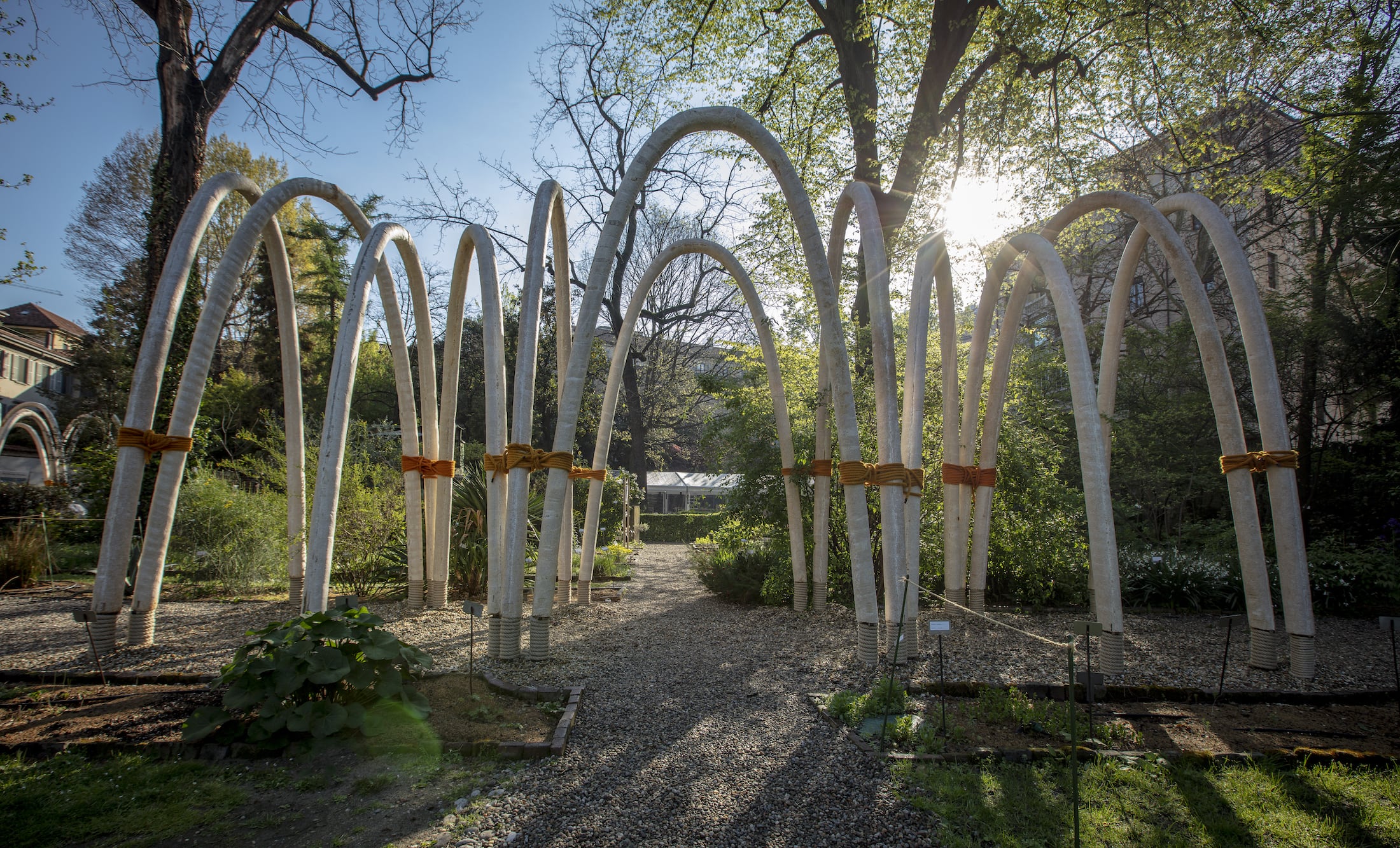
CRA – Carlo Ratti Associati与全球能源公司Eni合作开发的蘑菇建筑结构,已于4月9日亮相2019年米兰设计周。这个在六周内生长出来的名为“循环式花园”的装置,已在今年四月底重新回归于土壤。它由一系列的菌丝拱门组成,其全部菌丝加起来达到了创纪录的1公里长,同时,该装置也已进行了可持续的实验,它可以有机地生长,然后以完全循环的方式回归自然。该项目装置作为INTERNI人类空间展的一部分,已于2019年4月9日至19日在米兰的Fuorisalone植物园Brera’s Orto Botanico向公众开放展出。
CRA-Carlo Ratti Associati, in partnership with global energy company Eni, has developed an architectural structure made of mushrooms, to be unveiled today at Milan Design Week 2019. The installation, called “The Circular Garden,” was grown from soil over the past six weeks – and will be returned to the soil at the end of the month. It is composed of a series of arches, adding up to a record 1-kilometer-long mycelium, and experiments with sustainable structures that can grow organically and then return to nature in a fully circular way. The project will be showcased during Milan’s Fuorisalone at Brera’s Orto Botanico, the city’s botanical garden. The installation, part of the INTERNI Human Spaces exhibition, will be open to the public from April 9th to 19th 2019. The Circular Garden pushes the boundaries of using mycelium – the fibrous root of mushrooms – in design. In recent years, mycelium has been employed for sustainable packaging and small brick-like objects. The Circular Garden engages with mycelium at the architectural scale – with a series of 60 4-meter-high arches made of mycelium scattered around the Orto Botanico, for a total of 1 kilometer of mushroom.
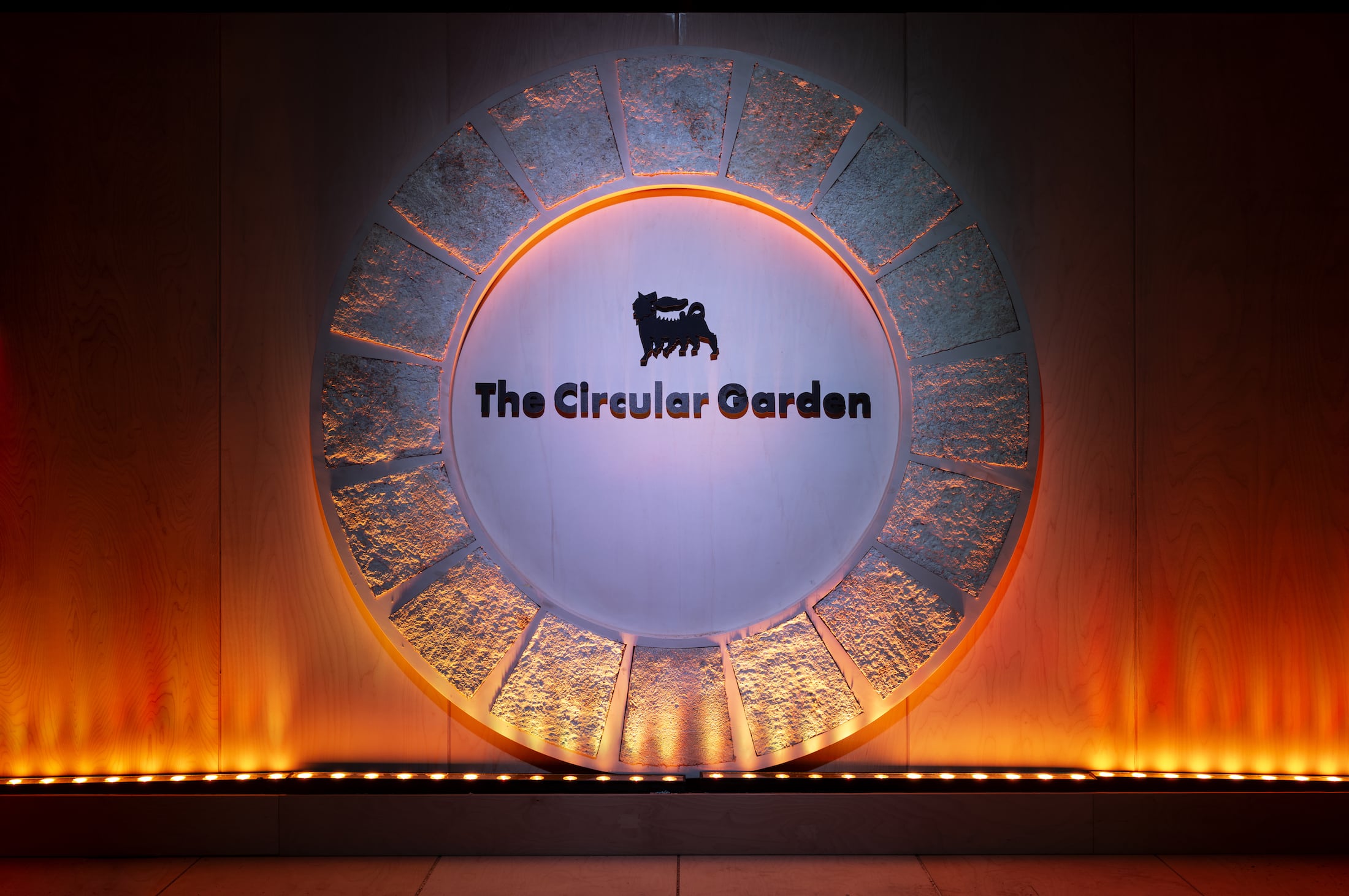
▼放在植物园里的装置

▼拱形装置结构
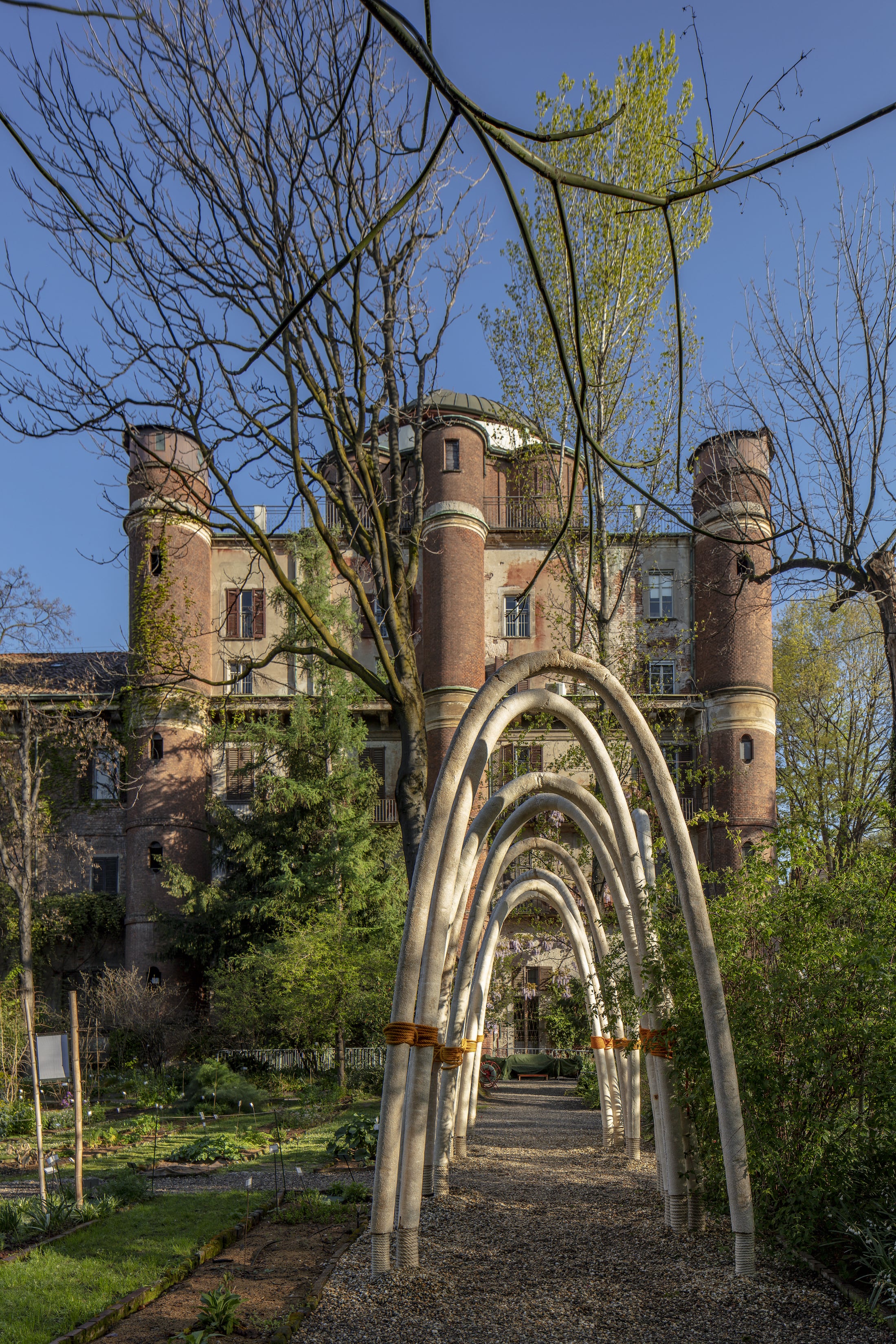

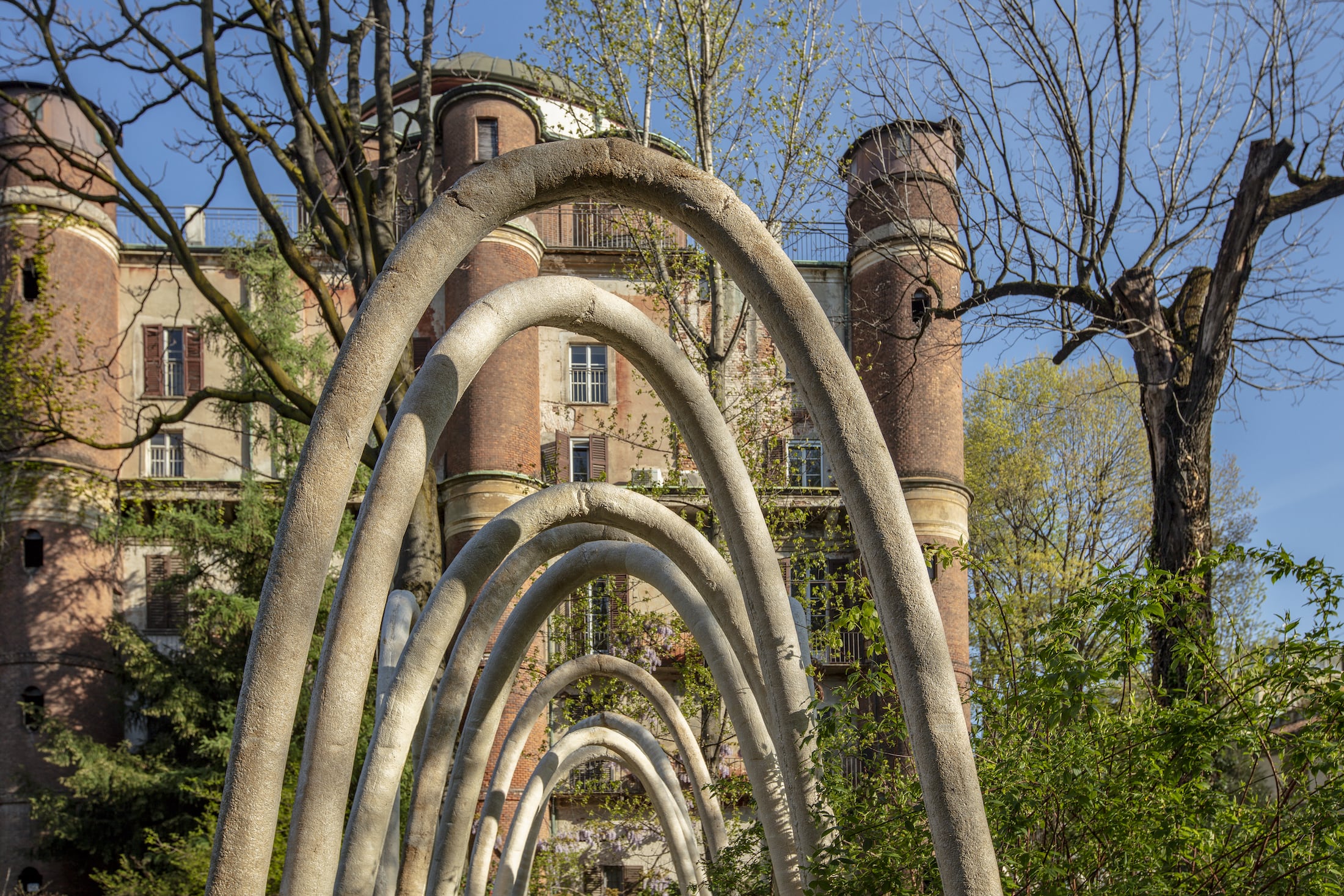

该循环花园的设计突破了菌丝(蘑菇的纤维根)的使用界限。近些年来,菌丝体已被逐渐应用于可持续包装和小型砖状物体中,而循环花园是在建筑尺度上结合菌丝体进行设计——全长共1公里的蘑菇菌丝体组成了60个4米高的拱门,散布在Orto植物园周围。为了创造如此大尺度规模的自支撑菌丝体结构,该项目从伟大的加泰罗尼亚建筑师Antoni Gaudi那里汲取灵感:他在设计巴塞罗那的圣家族教堂(Sagrada Familia)时,复兴了博学多才的Giovanni Poleni在18世纪首创的“倒链法”。设计师在创建纯压缩结构时会通过使用悬挂链找到它们的形式,然后将其反转倒置,同样,这个道理也适用于循环花园,这里的连环串体分散在整个花园中,构成了一系列的四“开放空间”结构。
In order to create self-supporting mycelium structures on such a scale, the project takes inspiration from the great Catalan architect Antoni Gaudí. It was he, while designing the Sagrada Familia in Barcelona, who resurrected the “inverted catenary” method pioneered in the 18th-century by polymath Giovanni Poleni. According to this method, the best way to create pure compression structures is to find their form using suspended catenaries and then invert them. The same applies to the Circular Garden, where the catenaries compose a series of four architectural “open rooms” scattered throughout the garden.
▼自支撑菌丝体结构 Self-supporting mycelium structures
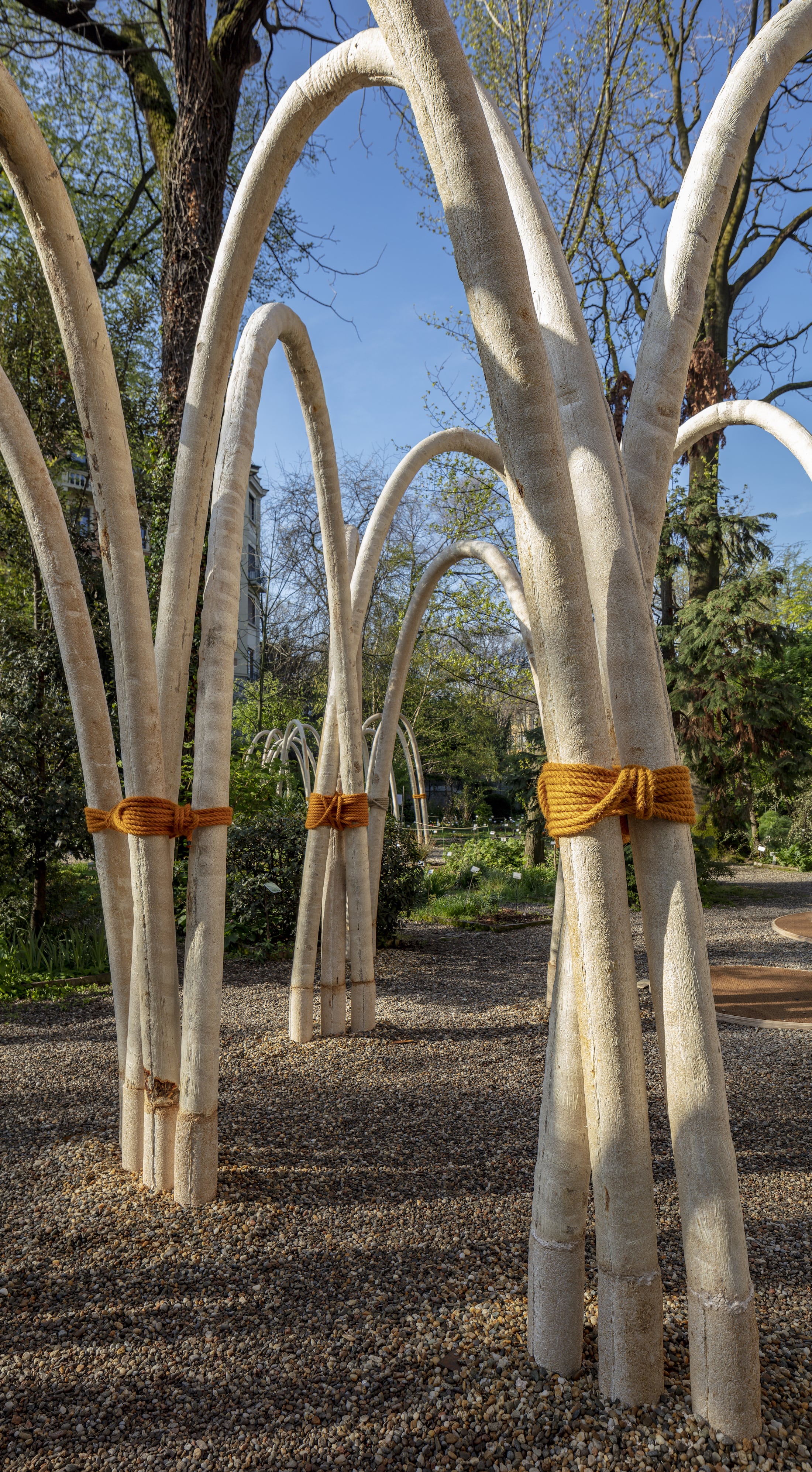


▼散布在整个花园中的四个建筑“开放式房间”

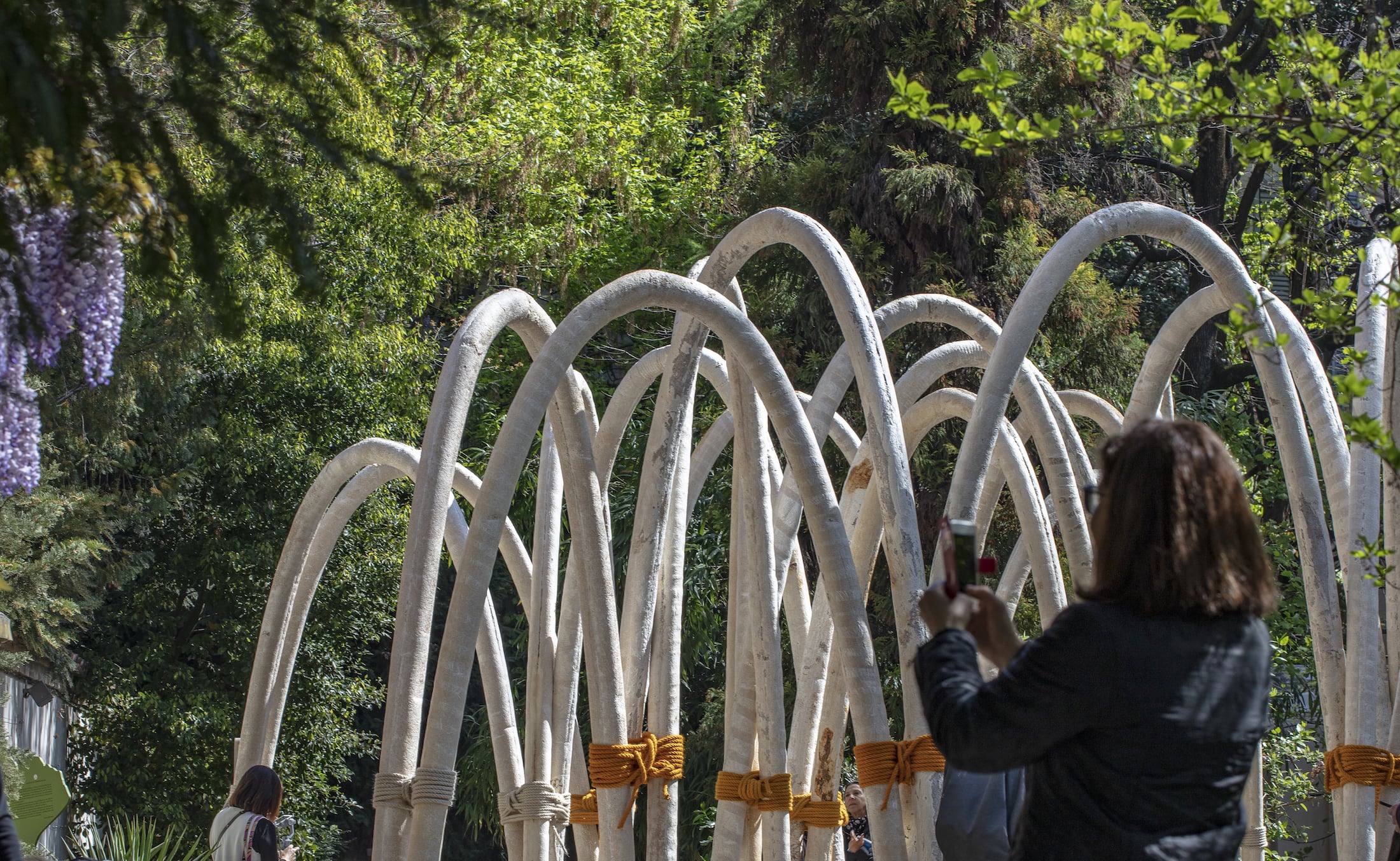

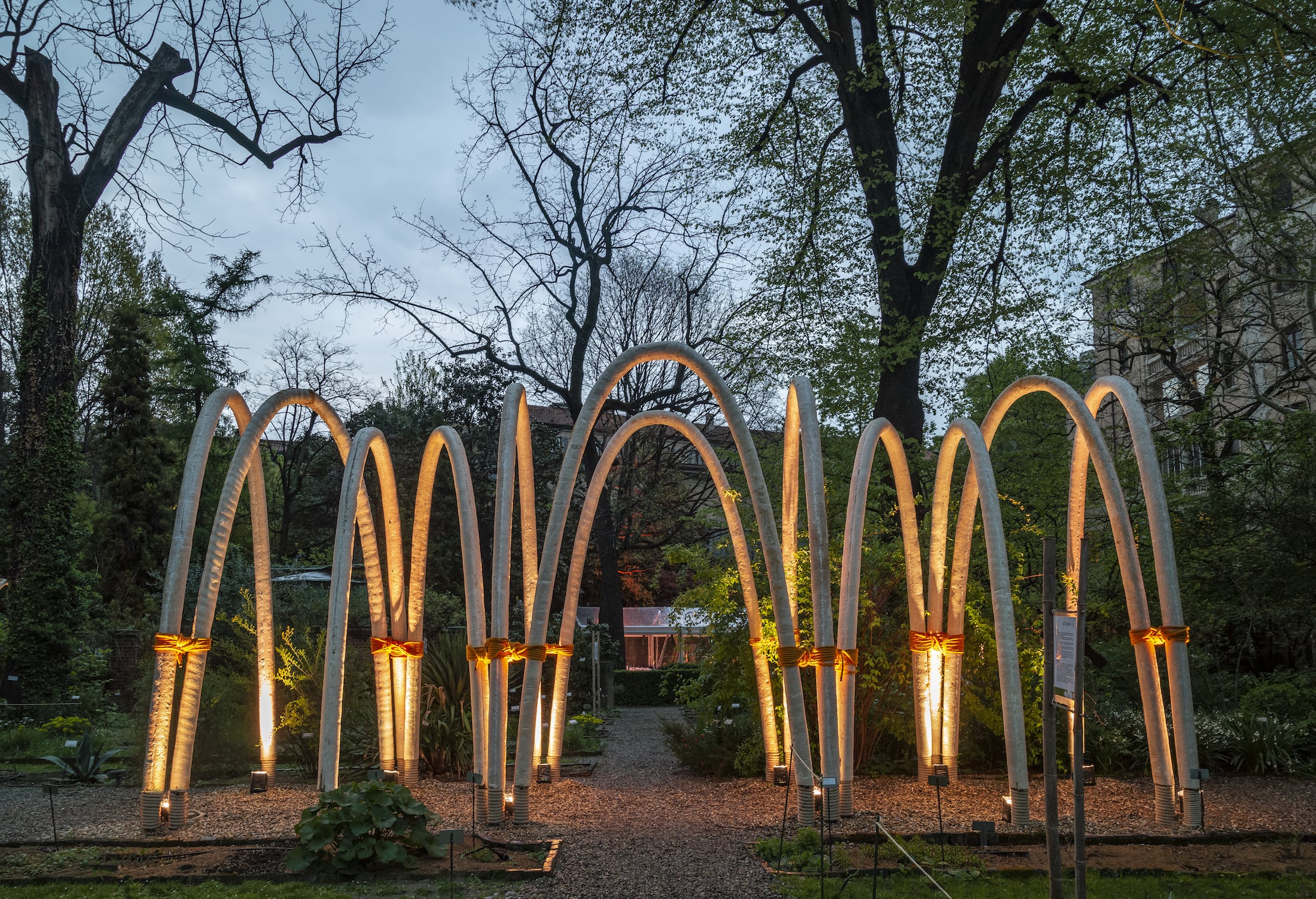
在循环花园开放前的两个月,真菌学领域的主要专家(特别是荷兰克朗生物实验室)帮助我们培养制成了装置所需的菌丝。他们将孢子注入有机材料中,使其开始生长,并以同样的有机方式,在米兰设计周结束时,将所有菌丝粉碎,使其重新循环回到土壤中。这种循环其实就类似于小镇或城市花园中通过生产食物和有机废物堆肥的方式。
The mycelium was grown in the two months preceding the opening of the Circular Garden with the help of leading experts in the field of mycology – particularly the Dutch Krown.Bio lab. Spores were injected into organic material to start the growth process. In a similarly organic manner, all the mycelium will be shredded at the end of Milan Design Week and go back to the soil, in a circular way. The cycle is similar to what has happened since ancient times in small town or city gardens, through the production of food and the composting of organic waste.



“大自然这个建筑师比我们聪明得多” CRA创始合伙人兼麻省理工学院可感知城市实验室(MIT Senseable City Lab)主任Carlo Ratti表示,“如果我们持续追求更具普遍性的‘生活’建筑,那自然世界和人工世界之间的界限也就越来越模糊。如果未来我们可以把物质编程为像植物一样‘长出一所房子’?那这座位于米兰市中心的绝美植物园就是进行这一实验的最理想场所。”
“Nature is a much smarter architect than us,” says Carlo Ratti, founding partner of CRA and director of the MIT Senseable City Lab: “As we continue our collective quest for a more responsive ‘living’ architecture, we will increasingly blur the boundaries between the worlds of the natural and the artificial. What if tomorrow we might be able to program matter to ‘grow a house’ like a plant? Milan’s amazing botanical garden, in the center of the city, seemed the ideal place for such an experiment”.
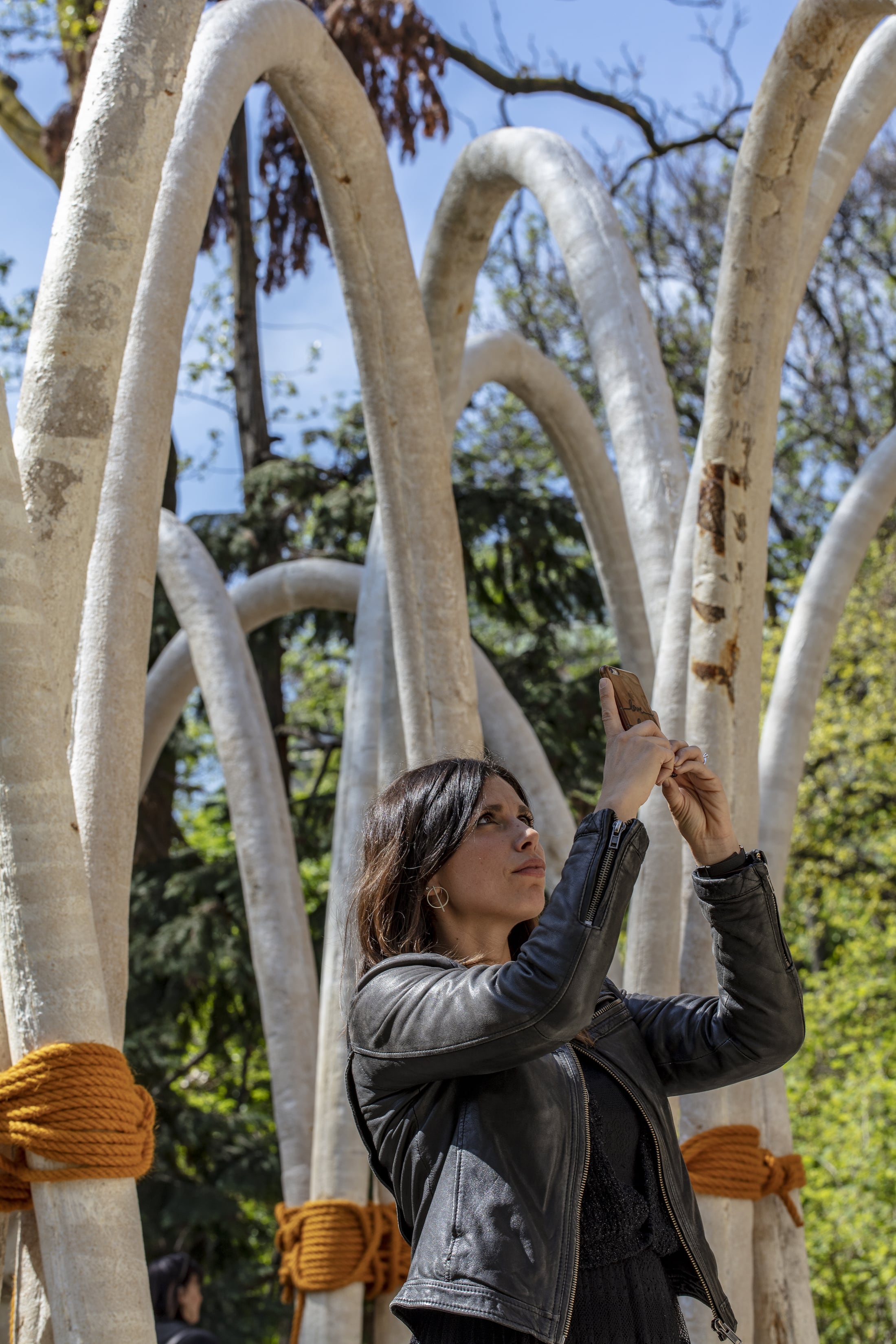
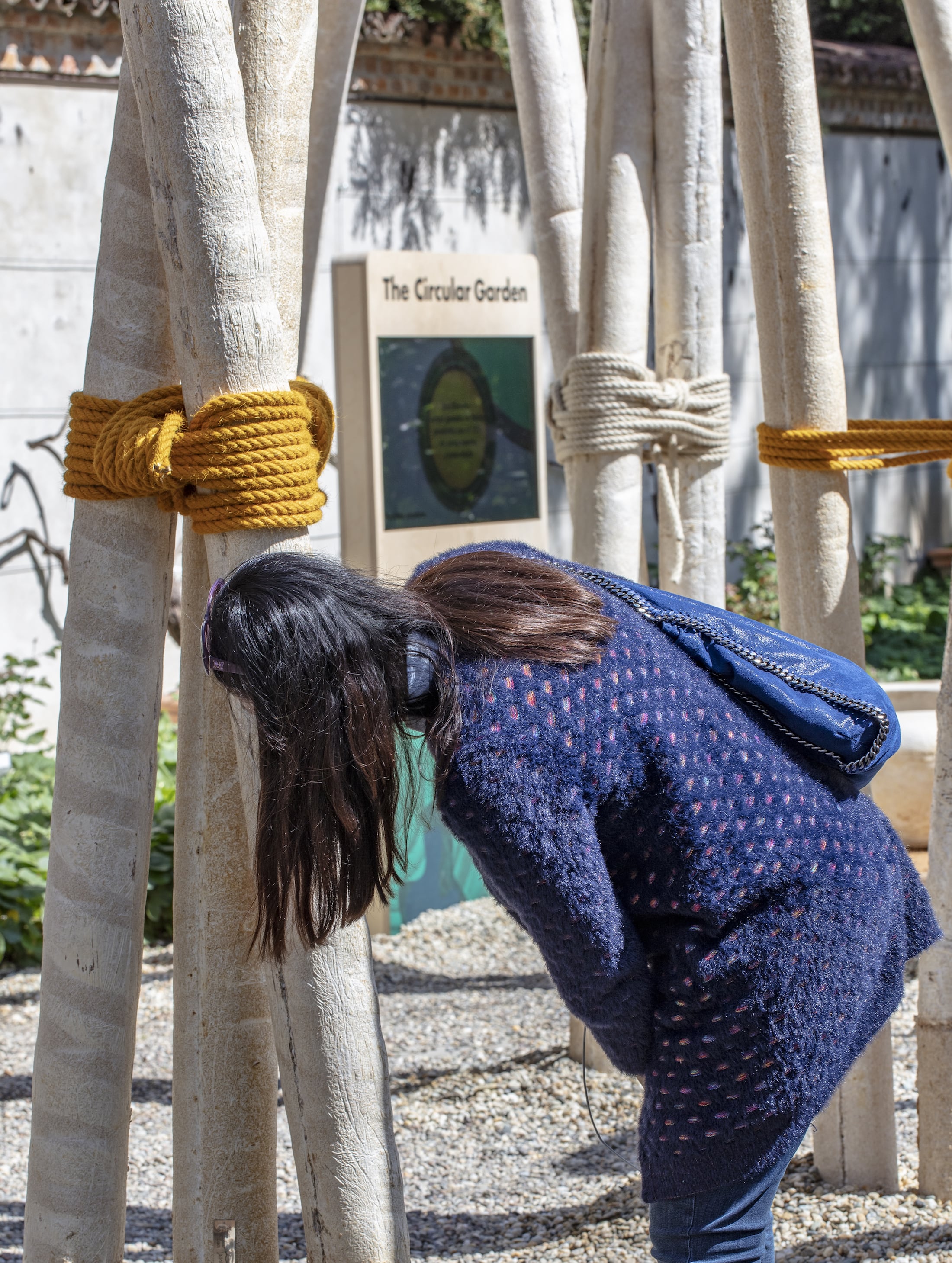
“意大利作家Italo Calvino在20世纪60年代写了一部异想天开的短篇小说,主要讲述了都市人Marcovaldo突然发现一些生长在城市中心的蘑菇的奇妙经历。” CRA项目经理Saverio Panata评论道,“我们在第一次参观米兰植物园的时候,也感受到了类似的惊讶。从那以后,我们就觉得蘑菇的适应性和生长速度,完全可以成为我们完美的建筑材料。”
“There’s a whimsical short story written by Italian writer Italo Calvino in the 1960s that tells of the wonder of the urbanite Marcovaldo when he suddenly discovers some mushrooms growing in the middle of the city. During our first visits at the Botanical Garden in Milan, we felt a similar amazement,” comments Saverio Panata, project manager at CRA: “We discovered how many varieties of mushrooms were naturally growing in the garden. After that encounter, we thought that mushrooms, with their adaptability and speed of growth, could become our perfect building material.”
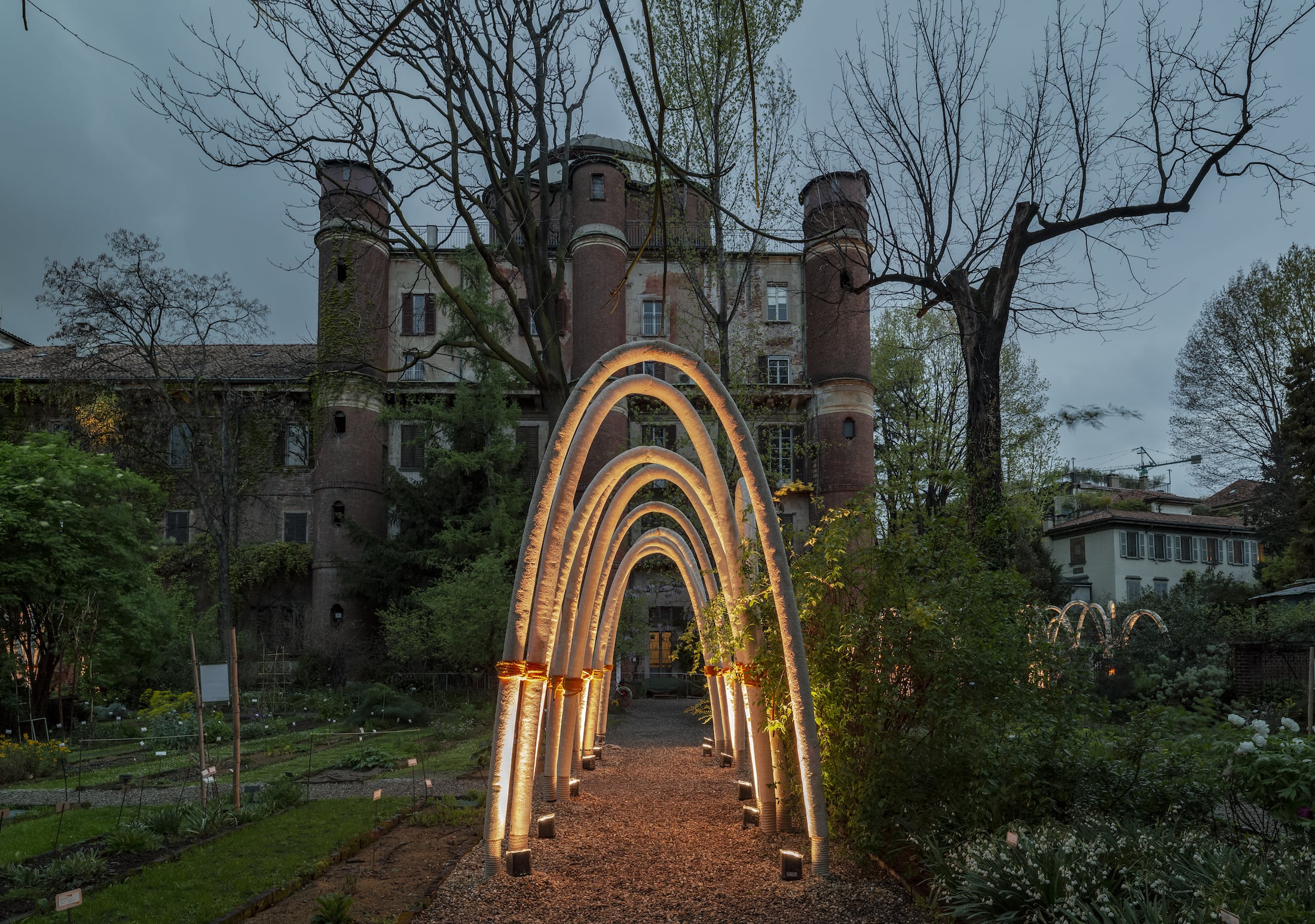
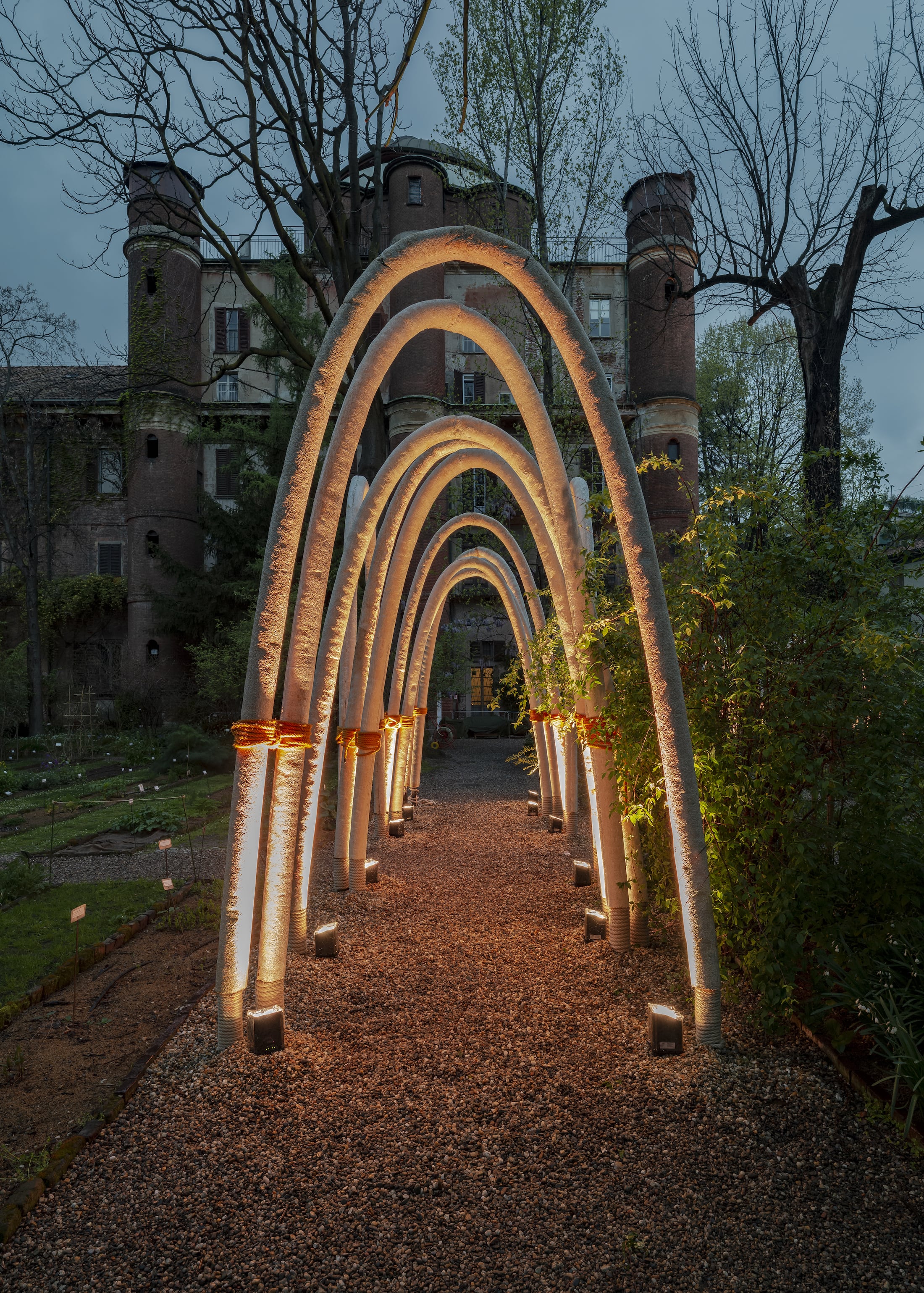
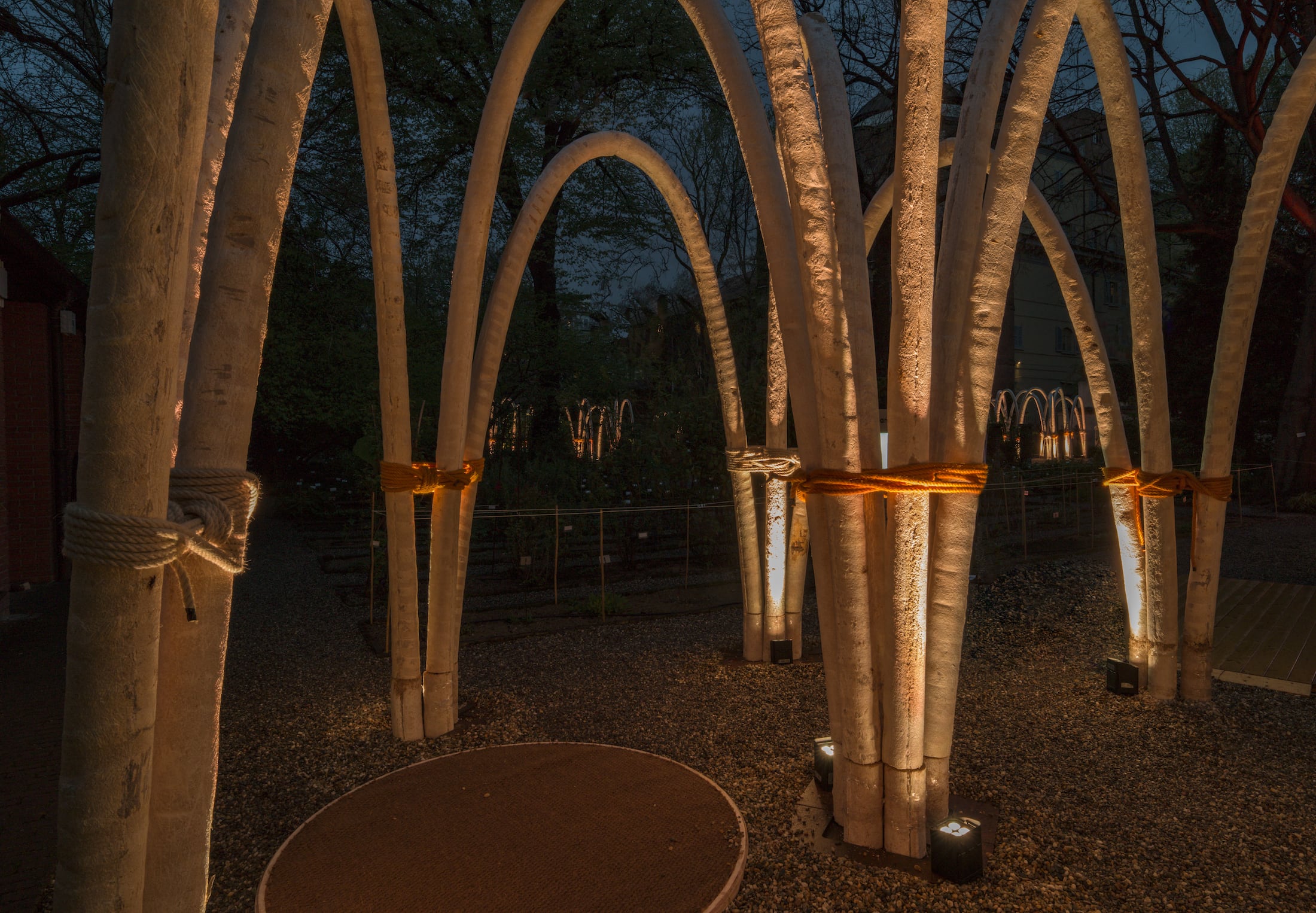
许多为临时展览和博览会设计的展馆,比如米兰设计周,最终都会产生大量不可回收利用的废物。该循环花园项目将以循环利用的方式解决这个问题:蘑菇、绳子和木屑都将回归土壤,其余小金属元素也将被回收利用。Oscar Niemeyer曾说过一句名言:“生活比建筑更重要”,这句名言是今年INTERNI人类空间展(INTERNI Human Spaces exhibition)主题的核心。“这不仅关乎人类生活,同时也越来越关乎我们整个星球的生命。”Ratti补充说道。
Many pavilions designed for temporary exhibitions and fairs – such as for Milan Design Week – end up generating large amounts of waste. The Circular Garden project will be reused in a circular fashion – mushrooms, ropes and wood chips will go back to the soil and small metal elements will be recycled. “Life is more important than architecture,” Oscar Niemeyer famously said, a dictum that is at the center of this year’s theme at the INTERNI Human Spaces exhibition. “It is certainly about human life – but it is also increasingly about the life of our planet, intended in a holistic way,” adds Ratti.
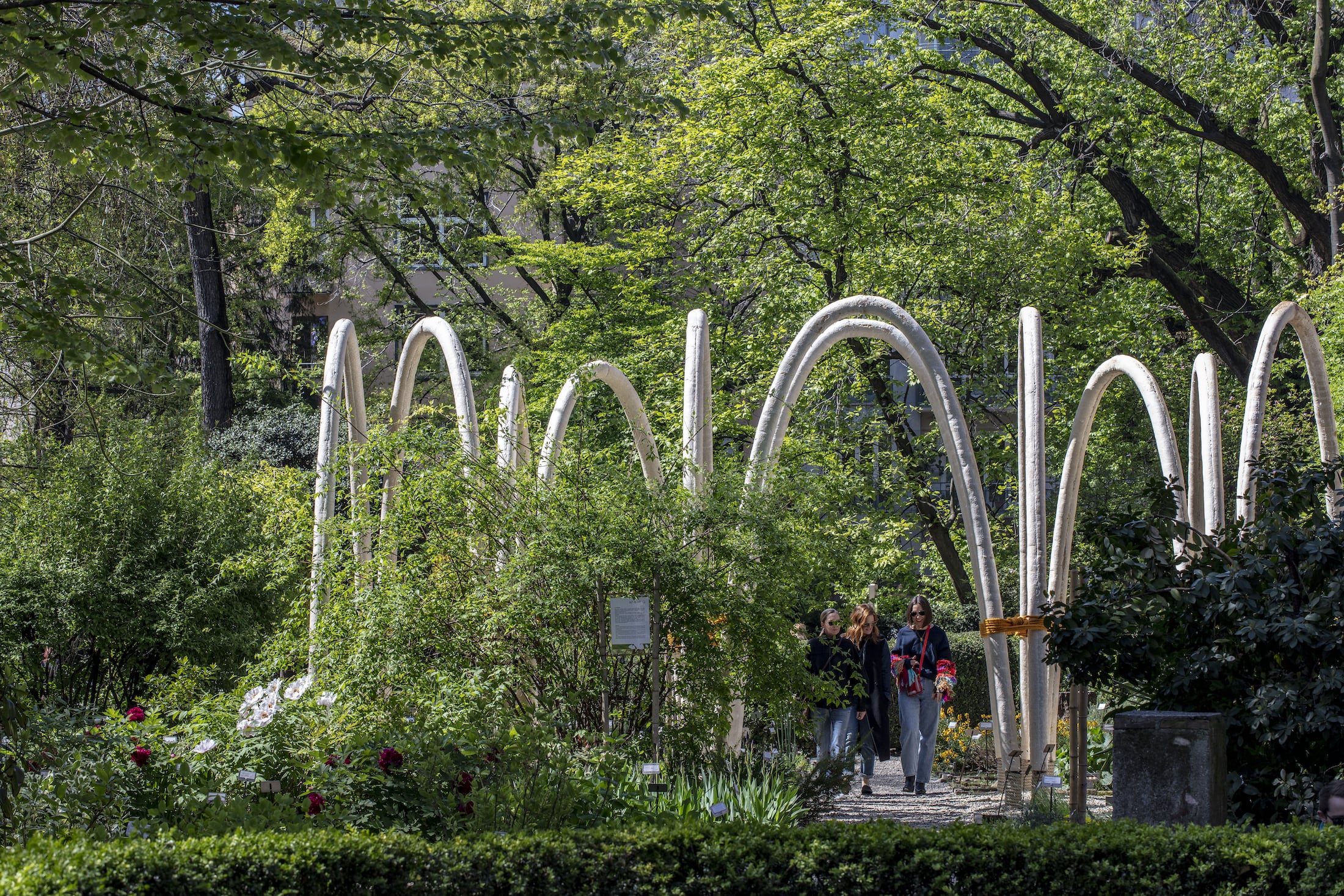

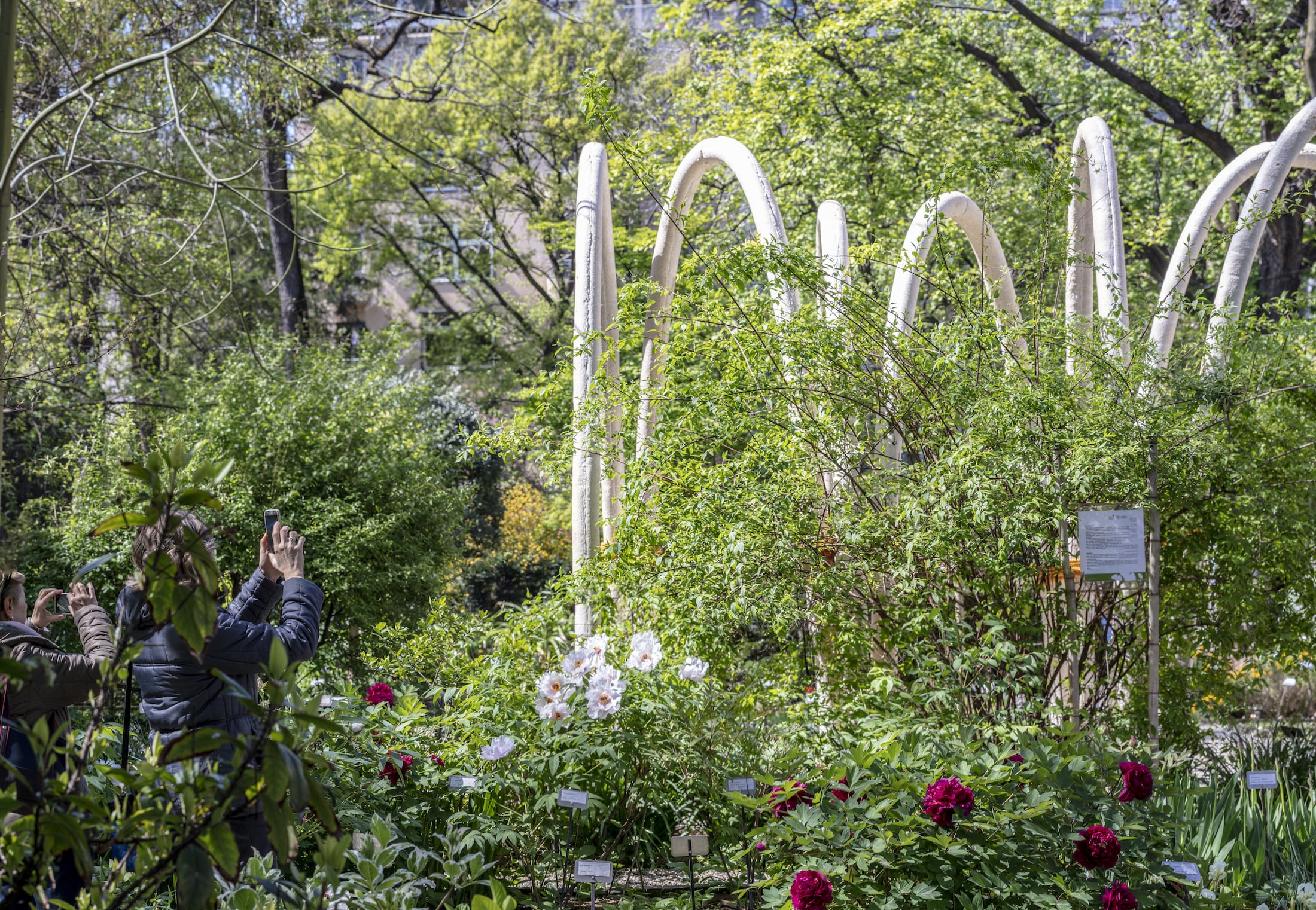
设计:CRA-Carlo Ratti Associati
客户:Eni
地点:意大利 米兰 Orto Botanico植物园
艺术顾问:Italo Rota
CRA团队:Carlo Ratti, Giovanni de Niederhausern, Saverio Panata (project manager), Luca Giacolini, Alessandro Tassinari, Nicola Scaramuzza
CRA制作团队:Alessandro Peretti Griva, Carlo Turati, Corrado Castiglioni, Luca Cianfriglia
CRA图形团队:CRA平面团队: Gary di Silvio, Gianluca Zimbardi
真菌学家顾问:Krown.bio
摄影:Marco Beck Peccoz
视频:Edithink
Design: CRA-Carlo Ratti Associati
Client: Eni
Location: Milan’s Orto Botanico, Milan, Italy
Artistic Consultancy: Italo Rota
CRA Team: Carlo Ratti, Giovanni de Niederhausern, Saverio Panata (project manager), Luca Giacolini, Alessandro Tassinari, Nicola Scaramuzza
CRA Make Team: Alessandro Peretti Griva, Carlo Turati, Corrado Castiglioni, Luca Cianfriglia
Renderings: CRA graphic team: Gary di Silvio, Gianluca Zimbardi
Mycologist consultants: Krown.bio
Photography: Marco Beck Peccoz
Video: Edithink
更多 Read more about: CRA-Carlo Ratti Associati




0 Comments